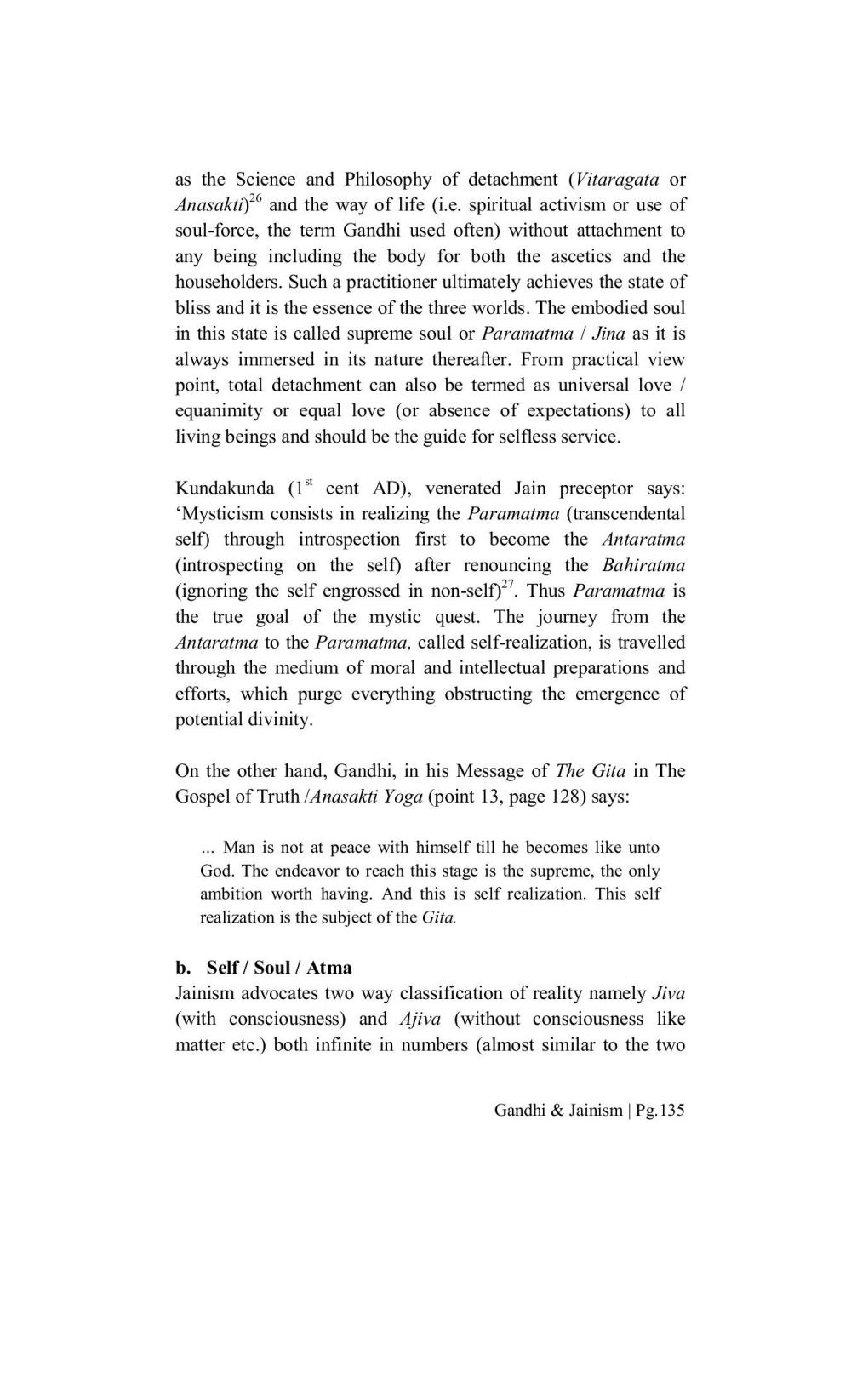________________
as the Science and Philosophy of detachment (Vitaragata or Anasakti)26 and the way of life (i.e. spiritual activism or use of soul-force, the term Gandhi used often) without attachment to any being including the body for both the ascetics and the householders. Such a practitioner ultimately achieves the state of bliss and it is the essence of the three worlds. The embodied soul in this state is called supreme soul or Paramatma / Jina as it is always immersed in its nature thereafter. From practical view point, total detachment can also be termed as universal love / equanimity or equal love (or absence of expectations) to all living beings and should be the guide for selfless service.
Kundakunda (1st cent AD), venerated Jain preceptor says: 'Mysticism consists in realizing the Paramatma (transcendental self) through introspection first to become the Antaratma (introspecting on the self) after renouncing the Bahiratma (ignoring the self engrossed in non-self)27. Thus Paramatma is the true goal of the mystic quest. The journey from the Antaratma to the Paramatma, called self-realization, is travelled through the medium of moral and intellectual preparations and efforts, which purge everything obstructing the emergence of potential divinity.
On the other hand, Gandhi, in his Message of The Gita in The Gospel of Truth/Anasakti Yoga (point 13, page 128) says:
... Man is not at peace with himself till he becomes like unto God. The endeavor to reach this stage is the supreme, the only ambition worth having. And this is self realization. This self realization is the subject of the Gita.
b. Self/ Soul / Atma
Jainism advocates two way classification of reality namely Jiva (with consciousness) and Ajiva (without consciousness like matter etc.) both infinite in numbers (almost similar to the two
Gandhi & Jainism | Pg.135




